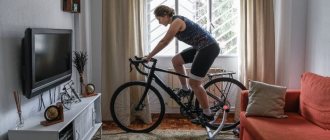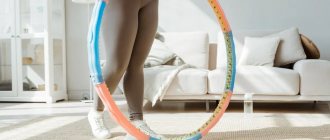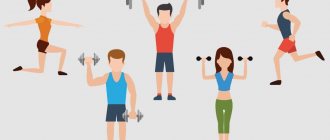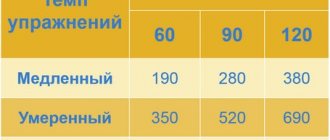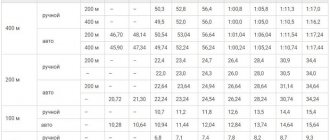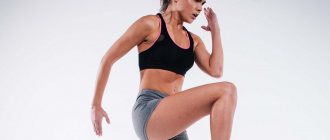Cardio exercise strengthens the immune system, builds endurance and helps you lose weight. Training in the gym may be too expensive or there is no time to visit it, then running on the spot at home will be an excellent alternative to physical activity, especially in winter. Running at home using special training programs helps you quickly achieve the desired result.
What results can you achieve by running on the spot at home?
Experienced athletes argue that running at home cannot completely replace a treadmill or jogging in the park, since the necessary physiological amplitude is not maintained during all movements. But they agree that running at home allows you to prepare the body for stress and start metabolic processes.
This exercise must be performed every day and control the landing of the foot. If you follow the running technique and systematic training, you can lose excess weight and restore the respiratory function of the lung tissue. Cases of remission of bronchial asthma and a decrease in the frequency of blood pressure surges in people suffering from them have also been reported.
Running in place for weight loss promotes improved blood circulation in the body.
When performing exercises at home, the mental and emotional state of patients with disorders of the nervous system functions is stabilized. Scientists have proven that running in place helps increase stress resistance and reduce the risk of heart attack.
How many calories does running in place burn?
The number of calories burned while running in place depends on the person's weight and time of exercise.
Average energy consumption:
| Weight, kg | Number of kcal for a certain period of time | ||||||
| 5 minutes. | 10 min. | 20 minutes. | 30 min. | 40 min. | 50 min. | 60 min. | |
| 40 | 26 | 55 | 108 | 161 | 238 | 267 | 319 |
| 50 | 32 | 68 | 135 | 201 | 303 | 335 | 410 |
| 60 | 41 | 80 | 163 | 241 | 364 | 400 | 480 |
| 70 | 48 | 95 | 188 | 279 | 423 | 467 | 561 |
| 80 | 54 | 108 | 214 | 323 | 482 | 533 | 642 |
The number of calories burned may vary depending on the intensity of the exercise.
To increase energy consumption it is necessary:
- actively move your arms while running;
- raise your legs high;
- use leg or arm weights.
Don't miss the most popular article in the section: Body drying for girls. Training program, detailed nutrition menu for the month by day.
What are the benefits of running in place?
Running in place differs from classic running in a gentler load on the spine and leg joints, which helps reduce the risk of injury.
For example:
- tendon rupture and sprain;
- ankle sprain;
- inflammation of the Achilles tendon;
- luxation of the patella;
- narrowing of the intervertebral space;
- plantar fasciitis;
- fractures of small bones.
Running in place allows you to:
- train the heart muscle;
- strengthen the walls of blood vessels and increase their elasticity;
- remove toxic substances and slag compounds along with sweat;
- stimulate metabolic and metabolic processes;
- reduce the load on the urinary system;
- increase lung volume;
- stabilize the nervous system;
- increase immunity;
- improve mood;
- accelerate blood flow and gas exchange in tissues;
- increase the tone of the muscular system;
- increase endurance;
- activate mental activity;
- prevent anemia and tachycardia;
- get rid of excess weight;
- improve the condition of the musculoskeletal system;
- increase skin elasticity.
Benefits of running in place
Running on the spot at home to lose weight or prepare for more serious exercise has a number of advantages over exercise on a machine:
- there is no need to buy specialized clothing, since a regular tracksuit is suitable for running in winter and summer;
- you can exercise at any convenient time, without spending it on the road to the park or gym;
- there is no need to look for a place to train, as any floor covering is suitable for it;
- no dependence on weather conditions;
- the spine and knees experience less stress due to landing on the toes;
- there is no possibility of falling and getting injured;
- The training plan and type of running can be selected for a person with any level of training.
What is needed to achieve results?
Another undoubted advantage of such exercises is their availability and low cost. All you need for a successful “jog” is a rubber mat, sneakers and comfortable clothes. It is important to follow a routine and exercise regularly. You shouldn’t expect quick results if you actively jump around in your apartment once a week. You need to spend 15-20 minutes on your body at least three times a week.
In order for classes to be effective, a person must fulfill 2 most important conditions:
- It is necessary to perform around 50-70 steps per minute to achieve a good result;
- The pulse should be 70-80% of the maximum possible (within the normal functioning of the cardiovascular system).
You need to run in place correctly to achieve weight loss results.
To monitor these characteristics, you can purchase a special heart rate monitor and download an application to your phone that calculates the corresponding indicators. It is also a good idea to purchase a pedometer that will accurately indicate the distance traveled. A formula that will help calculate the required heart rate value for each person: 220 – individual’s age * 0.5.
Disadvantages of running in place
Among the disadvantages of these trainings are:
- less physical activity, which is not suitable for advanced athletes;
- monotony of training;
- rapid loss of motivation;
- increased work of the calf muscles;
- lack of oxygen when exercising indoors;
- load on the ankle joint.
To maintain training tone, you need to monitor your running technique in place and use additional stimulants: turn on any programs on TV or listen to music.
It is very important to ventilate the room well during cardio training, as a lack of fresh air can lead to hypoxia and shortness of breath.
Bottom line
So what are the benefits of running in place? If you follow basic recommendations and advice, as well as the correct technique, you can achieve good results and benefits from your training. Benefits of running in place:
- A great way to get exercise at home
- No need for expensive equipment or special clothing
- Losing extra pounds
- Developing endurance and coordination
- Strengthening the musculoskeletal system, heart, increasing the vital capacity of the lungs
Subscribe to our blog, where you will find a huge amount of useful information. Remember, if you follow the training rules, monitor your condition and be persistent, you will achieve your results.
Contraindications for running in place
Running in place has fewer contraindications than classic running. Before starting training, you should consult a therapist.
Direct contraindications include:
- obstructive pulmonary disease;
- phlebeurysm;
- dystonia;
- ischemia;
- bronchial asthma;
- infectious diseases in the acute stage;
- intervertebral hernia;
- atherosclerosis;
- arthritis;
- hyperthermia;
- acute respiratory failure;
- allergic hay fever;
- flat feet;
- unhealed fractures;
- coccygeal bone cracks;
- fasciitis;
- high or low blood pressure;
- any surgical interventions performed shortly before training;
- thyroid diseases;
- kidney pathologies;
- ulcerative lesions of the digestive system;
- progressive myopia;
- retinal detachment;
- glaucoma;
- pathologies of the central nervous system, in which impaired coordination of movements is observed;
- muscle and tendon strain;
- osteoporosis;
- pregnancy;
- spinal column injuries;
- cirrhosis;
- obesity;
- coxarthrosis;
- acute heart failure;
- epilepsy.
Technique of running in place
Running on the spot at home to lose weight or increase physical endurance requires adherence to technique and certain training rules.
Before you start running you should:
- do a little warm-up for the joints and stretch the muscles;
- provide oxygen access to the room;
- Depending on your state of health and level of training, choose the type of training.
It is also worth monitoring your heart rate; the number of contractions should not exceed 80%. To do this, you can use modern heart rate monitors or calculate the value using a simple formula: heart rate 80% = 220-age. The intensity of your workouts can be varied by speeding up or slowing down the pace. When running in place, you need to breathe through your nose or diaphragm.
Normal running
This type is the simplest and is a simulator of classic jogging. This kind of running in place is recommended for beginner athletes.
Running technique:
- Stand up straight and straighten your back.
- Bend your arms at the elbows and raise them to chest level.
- Start running, landing on the front of your feet.
- It is necessary to watch your knees, they should not go beyond the line of your feet.
- Breathing is carried out through the nose:
- when inhaling, relax your stomach;
- As you exhale, tighten your abdominal muscles.
Running with high knees
Technique for this type of running in place:
- Stand up straight and straighten your back.
- Pull in your stomach and slightly tighten your abdominal muscles;
- Raise your arms, bent at the elbows, to chest level.
- Start running in place, paying attention to your knees: they should not go beyond the line of your feet.
- Hands should work synchronously for each step: one hand down, the other up.
- The legs must be raised one at a time until a parallel line with the floor is formed.
- Breathing should only come through the nose.
- You need to land only on the front of your foot.
Running with knee lifts is one of the most difficult techniques . During the exercise, the gluteal, thigh and calf muscles work, and the load on the muscles of the lumbar back increases, so it is recommended to take short breaks between approaches.
Running with shin sprains
The main load during this type of running falls on:
- gluteal muscles;
- knee-joint;
- back of the thigh;
- abdominal muscles.
Technique:
- Stand up straight and lean your body forward slightly.
- Raise your bent arms to chest level.
- Start running by alternately bending your legs at the knee and throwing them back as far as possible, that is, you need to touch your buttock with your heel.
- The supporting leg should be straight.
- Landing during this run should occur on a full foot.
- Hands should work synchronously: one - down, the other - up.
- You need to breathe through your nose, exhaling through your mouth is allowed.
- It is necessary to watch your shoulders: they should not be tense.
This type of running in place does not place large loads on the spinal column, as there is a smooth rocking on the feet. At the same time, the intensity of the load decreases insignificantly.
Running in place for weight loss
Running on the spot at home for weight loss will have a great effect when using additional exercises. The process of burning calories increases significantly during interval running, and continues for another 4-6 hours after the end of the workout.
You can use a ready-made lesson plan:
- Walk in place for 2 minutes.
- Simple running in place at an average pace - 3 minutes.
- Running in place with the shin whipping backwards at a high pace - 2 min.
- Simple running in place at a high pace - 2 minutes.
- Simple running in place at a slow pace - 5 minutes.
- Jumping run for 3 minutes:
- push strongly off the floor with each foot;
- land only on your toes;
- breathing should occur only through the nose.
- Simple running in place at a slow pace - 5 minutes.
- Walk in place for 2 minutes.
When adapting to this training plan, it is necessary to gradually increase the time of each exercise or add leg weights or dumbbells, the weight of which does not exceed 1.5 kg. You can also add running with high knees and arm swings.
Running in place for endurance
To increase the adaptive characteristics of the body, it is necessary to perform all exercises at a high pace for as long as possible. For these purposes, two types of running are used: interval running and running with high knees.
It is worth noting that:
- when raising your legs, you must maintain parallelism with the floor; to do this, you can stretch your arms forward;
- breathing should occur only through the nose.
Interval training to improve endurance:
- Simple jogging in place at an average pace—5 minutes.
- Running with high knees at a high pace - 7 minutes.
- Running in place at a high pace - 7 minutes.
All 3 exercises are one approach; during training you must perform at least 2-3 approaches with a break of 60 seconds. When adapting to loads, it is recommended to increase the number of approaches or the time for performing each exercise.
Mixed media
Running on the spot at home can be of a mixed type. This type of training is used for weight loss by people who are accustomed to short interval training. The technique involves performing all exercises at the same pace: slow or medium. This is necessary to maintain strength for the entire workout and activate a long period of calorie burning.
Sample workout in mixed type:
- Simple running in place - 8 minutes.
- Walking – 2 min.
- Running with knees raised - 2 min.
- Simple jogging - 2 min.
- Walking – 1 min.
- Repeat exercises 1-5 2 times.
- Running with shin choking - 3 min.
- Simple jogging - 1 min.
- Repeat exercises 7-8 3 times.
- Walking – 2 min.
- Simple jogging - 1 min.
- Walking – 2 min.
Don’t miss the most popular article in the section: Glutamic acid - what it is, why and how it is used in sports and bodybuilding.
Contraindications and benefits
Contraindications to running in place
You should not run in place if you have a severe curvature of the spine, injuries to the knees, ankle and hip joints, pregnancy, obesity with a BMI of 35.0 or higher, varicose veins of the legs and hypertension in the acute stage.
Benefits for the body
So, let’s get rid of illusions - running in place is not a complete replacement for classic running; if this were so, no one would run in parks and stadiums.
Running in place, like any cyclic load of sufficient intensity, has a training effect on the cardiovascular system, increases aerobic capacity, and overall endurance.
The work performed (periodic raising and lowering of the general center of gravity of the body) requires the expenditure of energy, which is ultimately taken, if we ignore intermediate processes, from fat reserves.
This, of course, if you do not immediately compensate for the costs with food. It is impossible to lose weight from just running in place; you also need to follow a diet with a predominance of energy expenditure (for life activities, production work, running in place) over the energy supplied with food.
The energy deficit for optimal weight loss should be about 400 kcal per day. We will try to provide these 400 kcal not by cutting the diet, but exclusively by running in place.
However, an intermediate option is also possible - if you don’t have enough time to run in place, you can cut your food by 200 kcal, and spend 200 kcal running in place.
It is generally accepted that a person weighing 60 kg spends 500 kcal of energy per hour of running on the spot. However, this is a very approximate value, since costs depend significantly on the intensity of running. Running, even if it is stationary, can be of different intensity, and the intensity is determined by the height of the jump when running.
And the height of the jump is far from being such a visible value as the speed during classical running, which is recorded in the stadium by the time it takes to run one lap. This reveals the main disadvantage of running in place - there is no feedback, the result of the work is not visible.
But man is lazy by nature, and, from the point of view of common sense, it is difficult to think of a more meaningless activity than running in place. There may be a desire to save on costs. To avoid this (after all, the goal is to expend the maximum number of calories), you will have to control your pulse.
An optimal heart rate when running in place is the only guarantee that the exercise was not in vain.
Heart rate during exercise
We calculate our individual heart rate zone in the following order:
- determine resting pulse;
- calculate the maximum heart rate;
- calculate the lower limit of the pulse zone;
- We calculate the upper limit of the pulse zone.
Let's use an example to calculate the boundaries of the pulse zone:
A person losing weight (age 35 years) determined in the morning, after waking up, lying in bed on his back, his resting pulse was 65.
Maximum heart rate is calculated as 220 minus age: 220 - 35 = 185.
The lower limit of the pulse zone lies in the middle between the resting pulse and the maximum pulse: (65 + 185)/2 = 125.
The upper limit of the pulse zone lies in the middle between the lower limit of the pulse zone and the maximum pulse: (125 + 185)/2 = 155.
Thus, for jogging in place to be effective for weight loss, the heart rate (by example) during exercise should be in the range of 125-155 beats per minute.
At the same time, you should stick to the lower value if you are just starting to exercise; you will reach the upper value after a few months of training, as your level of fitness increases.
Muscle work when running
Running in place uses the muscles of the upper body and legs to varying degrees.
Buttock area
The muscles of this part of the body help keep a person upright. During training, they are used at only 10%. Simple running in place allows you to tighten your buttocks and round their shape, but it is not enough to add volume to this area.
More efficient work of the gluteal muscles is influenced by:
- increased running pace;
- Ben with a shin wrap and knee lift.
Hips
The muscles of this part of the body are responsible for bending the knee joint and moving the legs relative to the pelvis. They are represented by 4 bundles. This area works actively while running in one place.
Training affects:
- quadriceps, which consists of:
- 3 vastus muscles: intermedius, lateral and medial;
- 1 rectus muscle;
- posterior biceps muscle.
Shin and calves
Running on the spot at home to lose weight in the lower leg area is often used, since this part of the legs is used the most during exercise.
When running in place, the following are developed:
- soleus muscle;
- 3rd fibula;
- tibial posterior and anterior;
- calf muscles.
Feet
The muscles that are located in the foot work less actively than the lower leg.
Running in place has a strengthening effect on:
- vermiform muscle;
- short flexor and extensor muscles;
- interosseous muscles from the back.
Upper body
Running in place activates the work:
- intercostal muscles with rapid or deep breathing;
- press, which allows you to maintain balance;
- iliacus muscles, which regulate the movement of the pelvic region;
- lumbar muscles, which allow you to hold the body when bending;
- the broad muscles of the back, which allow you to move your shoulders and regulate your breathing;
- arm muscles:
- triceps;
- triceps and biceps brachialis;
- biceps.
Running in place uses most of the muscles in the upper body and can give the muscles the correct shape and relief.
Correct technique
- Never start a workout without warming up your muscles. Do a short warm-up, light stretching;
- During training, keep your back straight, pull your stomach in, bend your arms at the elbows at a level just below your chest;
- Relax your shoulders;
- During exercise, make sure to breathe correctly: inhale air through your nose, exhale through your mouth;
- The height of the knees is controlled individually - it is important that maximum impact and good work of the lower leg are achieved. The higher you raise your legs, the more energy you will expend - the ideal option is when the thigh is parallel to the floor during lifting.
- Land your foot on your toes.
The functioning of the respiratory system when running
The respiratory system is considered adaptive because it regulates the frequency and depth of breathing depending on the oxygen demand of cells. If there is insufficient supply of this gas to the tissues, the load on the heart increases, which causes an acceleration of its rhythm. To stabilize the condition, the body begins to increase the number of sighs by reducing the inhaled volume of air.
When running in place, the respiratory system can operate in 2 modes:
- Adapted, or aerobic , when sufficient gas exchange occurs in tissues during physical activity. This type of breathing is observed at an average pace of exercise and a heart rate of about 60%.
- Hypoxic , in which the body is unable to adapt to muscle activity and experiences oxygen starvation. In this case, the number of small capillaries and the volume of blood vessels in the lungs begin to increase. This allows the body to overcome the hypoxic threshold due to better release of oxygen from a small volume of air.
How much and how often should you run?
To achieve the maximum effect from training, you need to exercise regularly. The first results will be noticeable after 1 month of training, and if you follow proper nutrition and perform additional exercises - after 2 weeks. The first workout should not exceed 5 minutes.
As you get used to the loads, the running time should be increased by 1-2 minutes. every 3 days. The duration of running in place depends on the person’s well-being and the presence of concomitant diseases. It can vary from 30 to 60 minutes. On average, if a person weighs 60-70 kg, in 1 month of training you can lose about 3-5 kg.
Overall, running in place is a worthy alternative to classic running. It is suitable for people who do not have a lot of free time or the opportunity to visit a fitness center. It is worth remembering that training at home does not allow you to work out all muscle groups and quickly lose weight, so they need to be supplemented with other activities.
Author: Shalunova Anna
Article design: Anna Vinnitskaya
Review Reviews
Judging by the reviews, many overweight people resort to running at home in place because they are embarrassed to run in front of other people.
They hope to lose a certain amount of kilograms, and then continue running in the park or stadium.
At the same time, there are tangible results: for example, one woman who was losing weight regularly lost 1 kg per month. At the same time, she considers the rate of loss insufficient, although she actually lost about 8 kg, which cannot be considered a failure.
Positive or hopeful reviews are interspersed with calls to stop doing nonsense and start running in the fresh air or in fitness centers. The authors of the calls are usually professionals related to fitness.

